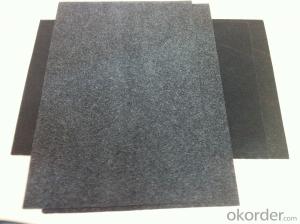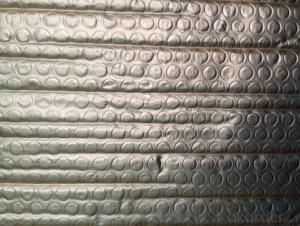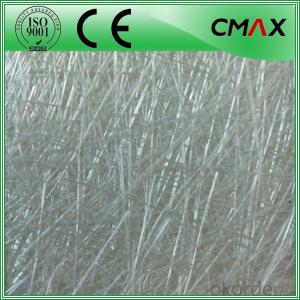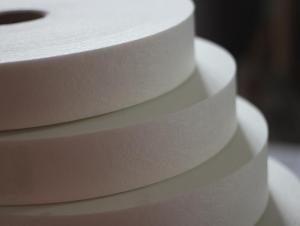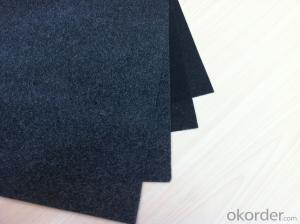BLACK FIBERGLASS TISSUE with PE COATING-50EP
- Loading Port:
- Shanghai
- Payment Terms:
- TT OR LC
- Min Order Qty:
- 500 m²
- Supply Capability:
- 100000 m²/month
OKorder Service Pledge
OKorder Financial Service
You Might Also Like
Introduction of Fiberglass Cloth with PE Coating for Heat Seal Lamination
Our black tissue are mainly used as facing for glass wool insulation, rockwool, mineral wool etc. Also fiberglass tissue facing is used under roof decking, under attic rafters, over existing attic thermal insulation, in floors, walls and crawl spaces, and in industrial and commercial buildings to block radiant heat coming into house through the roof during the summer and retain indoor heat generated during in winter
Advantage of Fiberglass Cloth with PE Coating for Heat Seal Lamination
Light weight
• High manufacturing accuracy
• High strength
• Small inertia resistance
• Strong heat dissipation ability
• Good visual effect
Packing of Fiberglass Cloth with PE Coating for Heat Seal Lamination
1. Waterproof paper then PVC shrinking Film
2. Water-Proof film only
3. Woven cloth
4. Kraft paper or Water Proof Film then Metal/wooden pallet
5. (Also as your request. )
Application of Fiberglass Cloth with PE Coating for Heat Seal Lamination
Fiberglass Tissue is a kind of facing, which is made of by the white fiberglass tissue, and special production process.
Specification of Fiberglass Cloth with PE Coating for Heat Seal Lamination
PROPERTIES | UNIT | VALUE | TEST METHOD |
Basic weight | gsm | 98 | ASTM D646 |
Tensile strength: M. D. X. D. | N/25mm | 132 65 | ASTM D828 |
Burst strength | N | 30 | ASTM D774 |
Reflectivity of foil surface | % | 95 | ---------- |
Temp. Resistance | -29°C 66°C | No Delamination No Delamination | ASTM C1263 |
Water vapor permeance | ng/N.s | 1.15 | ASTM E-96 |
Pictures of Fiberglass Cloth with PE Coating for Heat Seal Lamination



FAQ
We have organized several common questions for our clients,may help you sincerely:
1. What is the storage condition?
The Aluminum Foil Facing should be stored at room temperature and kept from wet and heat source.
2. How to guarantee the quality of the products?
We have established the international advanced quality management system,every link from raw material to final product we have strict quality test;We resolutely put an end to unqualified products flowing into the market. At the same time, we will provide necessary follow-up service assurance.
3. How long can we receive the product after purchase?
In the purchase of product within four working days, we will arrange the factory delivery as soon as possible. The specific time of receiving is related to the state and position of customers. Commonly 7 to 10 working days can be served.
- Q: Where can one purchase black fiberglass tissue?
- <p>You can buy black fiberglass tissue from various sources. Local home improvement stores or building supply shops often carry fiberglass products. Online retailers like Amazon, eBay, and specialized fiberglass supply websites also offer a wide range of fiberglass tissues in different colors, including black. Additionally, consider checking with industrial supply companies or contacting fiberglass manufacturers directly for bulk purchases or specific requirements. Always ensure the product meets your project specifications and safety standards.</p>
- Q: This question asks for a method to determine if the insulation material in use is made from black fiberglass tissues.
- <p>To determine if your insulation material is made from black fiberglass tissues, you can perform a simple visual inspection. Black fiberglass insulation typically has a dark, almost black color, and is made from fine glass fibers. You can also check for the manufacturer's label or documentation that came with the insulation. If you're still unsure, you can perform a burn test; fiberglass doesn't burn but will melt when exposed to a flame, producing a chemical smell. However, be cautious with this test as it can release harmful fumes. Alternatively, consult with a professional inspector or contractor who can accurately identify the material for you.</p>
- Q: How should one properly store black fiberglass tissue to maintain its quality and integrity?
- <p>The best way to store black fiberglass tissue is in a cool, dry place, away from direct sunlight and moisture. Store it in a sealed, airtight container to prevent contamination and degradation. Ensure the storage area is well-ventilated to avoid the accumulation of moisture and to protect the tissue from any chemical fumes. Keep it away from heat sources and sharp objects that could cause damage. If possible, label the container with the type of fiberglass and any relevant handling instructions for easy identification and safe handling.</p>
- Q: This question asks for a comparison between black fiberglass tissue and other construction materials, focusing on their properties and applications.
- <p>Black fiberglass tissue, also known as black glass fiber tissue, is a type of composite material made from glass fibers and resin. Compared to other building materials, it offers several advantages. It is lightweight, which reduces the load on structures, and has high tensile strength, making it durable. It is also resistant to corrosion and has good thermal insulation properties. Unlike some materials, it doesn't conduct heat or electricity, which can be beneficial in certain applications. However, it is more expensive than traditional materials like wood or concrete and requires special handling due to the potential health risks associated with the fine fibers. It's commonly used in roofing, insulation, and other applications where its unique properties are beneficial.</p>
- Q: This question asks for a comparison between black fiberglass tissue and other sound insulation materials, focusing on their properties and effectiveness.
- <p>Black fiberglass tissue is a type of sound insulation material known for its lightweight, flexibility, and high sound absorption capabilities. Compared to other materials, it offers excellent thermal insulation and resistance to moisture and fire. However, it may not be as dense or heavy-duty as some alternatives like mass-loaded vinyl or certain types of acoustic foam, which can provide better soundproofing in high-noise environments. Black fiberglass tissue is also sensitive to physical damage, which can reduce its effectiveness over time. It's important to consider the specific application and environmental factors when choosing the right sound insulation material.</p>
- Q: This question asks for a comparison between black fiberglass tissue and cotton tissues regarding their performance and cost-effectiveness.
- <p>Black fiberglass tissue and cotton tissues have distinct differences in performance and cost. Black fiberglass tissue, known for its strength and durability, is often used in industrial applications where heat resistance and chemical resistance are required. It is non-absorbent and does not rot, making it suitable for outdoor and harsh environments. However, it is generally more expensive than cotton due to its specialized manufacturing process. Cotton tissues, on the other hand, are soft, absorbent, and biodegradable, making them ideal for personal care and domestic use. They are more cost-effective and widely available but lack the durability and heat resistance of fiberglass tissues. Overall, the choice between black fiberglass and cotton tissues depends on the specific application and budget considerations.</p>
- Q: This question asks about the impact of black fiberglass tissue on the quality of air inside buildings.
- <p>Black fiberglass tissue, commonly used as insulation, can affect indoor air quality if not properly installed or if it becomes damaged. Fiberglass releases tiny glass fibers into the air, which can be inhaled and cause respiratory irritation, allergies, or even more severe health issues over time. Proper installation and sealing can minimize the release of these fibers. Additionally, ensuring good ventilation in buildings can help reduce the concentration of airborne fibers. It's also important to follow safety guidelines when handling fiberglass to prevent exposure.</p>
- Q: Can black fiberglass tissue be utilized effectively for the purpose of window cleaning?
- <p>Yes, black fiberglass tissue can be used for cleaning windows. It is a durable and non-abrasive material that effectively removes dirt and grime without scratching the glass surface. The fine fibers can reach into small crevices and effectively clean the window. However, it's important to ensure that the fiberglass tissue is clean and free from any debris or particles that could potentially scratch the glass. Always test a small, inconspicuous area first to ensure it doesn't damage the window.</p>
- Q: Is it possible to use black fiberglass tissue for painting on surfaces?
- <p>Yes, black fiberglass tissue can be used for painting surfaces. It is often used as a substrate for various applications, including painting. To prepare the surface for painting, it should be cleaned thoroughly and possibly primed to ensure proper adhesion of the paint. The type of paint used will depend on the specific requirements of the project, such as durability, weather resistance, and aesthetic preferences.</p>
- Q: Is it possible to substitute traditional home insulation materials with black fiberglass tissue?
- <p>Yes, black fiberglass tissue can be used as an alternative to traditional insulation materials in your home. It provides thermal insulation, which helps in reducing heat transfer and can improve energy efficiency. However, it's important to consider the specific properties of black fiberglass, such as its resistance to heat and its impact on indoor air quality. It's also crucial to ensure that it is installed correctly to achieve optimal performance. Always consult with a professional to determine if black fiberglass is the best choice for your insulation needs and to follow safety guidelines during installation.</p>
Send your message to us
BLACK FIBERGLASS TISSUE with PE COATING-50EP
- Loading Port:
- Shanghai
- Payment Terms:
- TT OR LC
- Min Order Qty:
- 500 m²
- Supply Capability:
- 100000 m²/month
OKorder Service Pledge
OKorder Financial Service
Similar products
Hot products
Hot Searches
Related keywords
